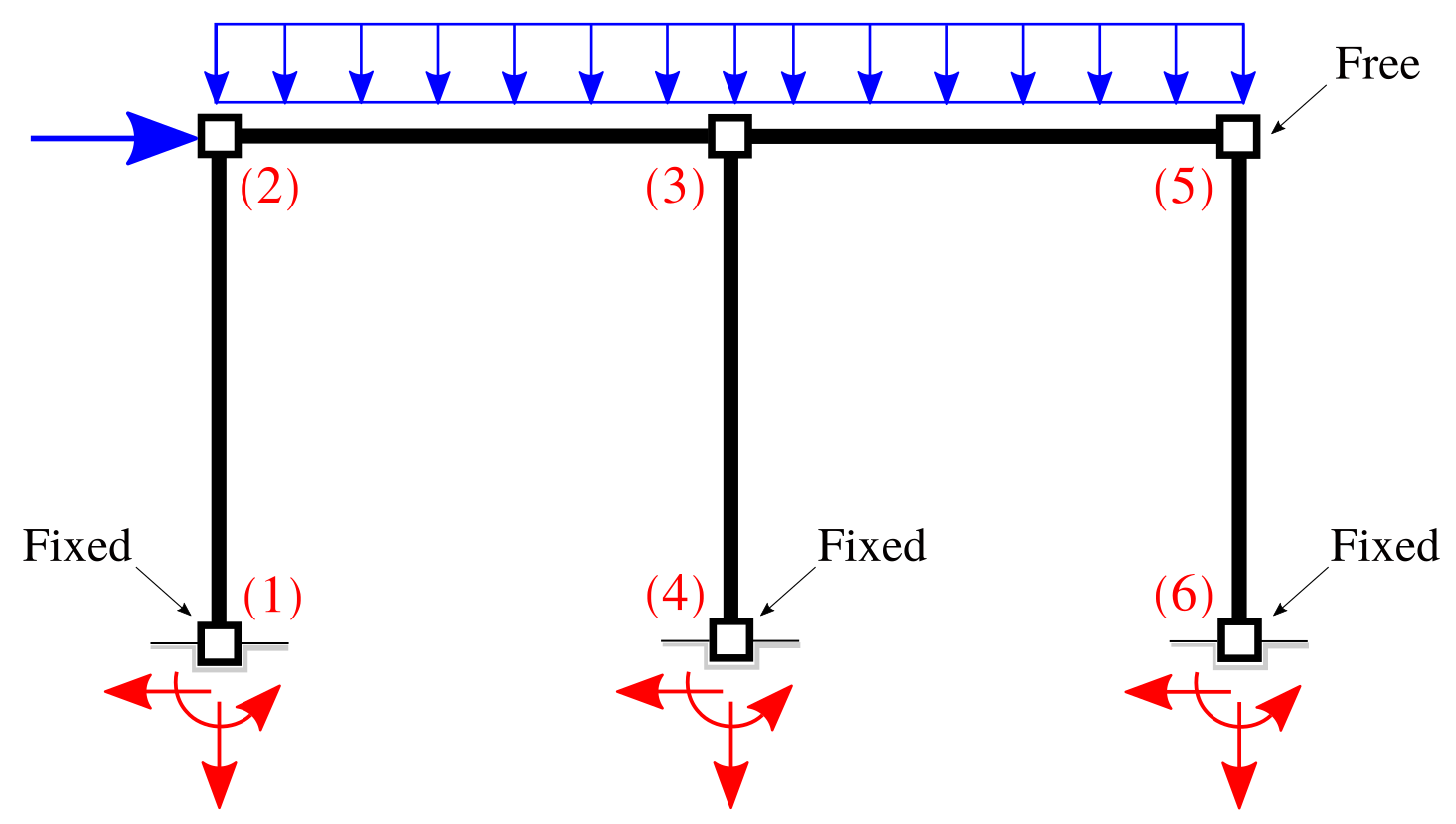Reaction are forces that are developed at the fixed (restrained) Node. Figure below shown schematically in blue arrows the external forces exserted on the model, while the red arrows represents the reactions forces.

The Reaction are computed once the solution has converged. Depending on the type of analysis the reaction are computed at
In order to guarantee continuity in the solution, if parallel processor are used, the Reaction are collected using:
Once the Analysis is done, and the state vectors (displacements, velocities, and accelerations) are known, the Reaction can be computed assembling all force contribution in the model. The process depend on the Analysis, thus:
\[ \mathcal{R} = \sum_\textrm{e = 1}^{\textrm{N}_\textrm{e}} {\mathbf{A}^\textrm{e}}^\top \mathbf{F}^\textrm{e}_{\textrm{int}} \mathbf{A}^\textrm{e} - \mathbf{F}_{\textrm{ext}}\,. \]
\[ \mathcal{R} = \sum_\textrm{n = 1}^{\textrm{N}_\textrm{n}} {\mathbf{A}^\textrm{n}}^\top \textbf{M}^\textrm{n} \ddot{\textrm{U}}^\textrm{n} \mathbf{A}^\textrm{n} + \sum_\textrm{e = 1}^{\textrm{N}_\textrm{e}} {\mathbf{A}^\textrm{e}}^\top \left( \textbf{M}^\textrm{e} \ddot{\textrm{U}}^\textrm{e} + \textbf{C}^\textrm{e} \dot{\textrm{U}}^\textrm{e} + \mathbf{F}^\textrm{e}_{\textrm{int}} \right) \mathbf{A}^\textrm{e} - \mathbf{F}_{\textrm{ext}}\,, \]
where \(\mathbf{A}^\textrm{n} : \mathbb{R}^{\textrm{N}_\textrm{dof}^\textrm{n}} \to \mathbb{R}^{\textrm{N}_{\textrm{total}}}\) is the nodal assembly operator, \(\mathbf{A}^\textrm{e} : \mathbb{R}^{\textrm{N}_\textrm{dof}^\textrm{e}} \to \mathbb{R}^{\textrm{N}_{\textrm{total}}}\) is the element assembly operator, \(\mathbf{M}^\textrm{e}, \mathbf{C}^\textrm{e}, \mathbf{K}^\textrm{e}\) are the Element mass, damping, and stiffness respectively, \(\mathbf{M}^\textrm{n}\) is the point masses applied to the Node, \(\mathbf{F}_{\textrm{ext}}\) the vector of external forces, \(\mathbf{F}^\textrm{e}_{\textrm{int}}\) the Element internal forces, and \(\textrm{N}_\textrm{n}\) are the number of Node in the model, and \(\textrm{N}_\textrm{e}\) the number of Element in the model.
REFERENCE: